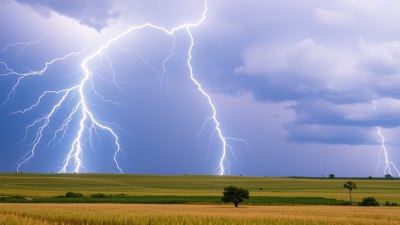Why Every Season Has a Built-In Identity Crisis
Explore the underlying identity crises tied to each season and how they impact our lives.

Image by prostooleh on Freepik
As the year progresses, we find ourselves transitioning through the four seasons: winter, spring, summer, and fall. Each season not only marks a change in weather but also brings with it a shift in our emotions, behaviors, and perceptions. The concept of an identity crisis, although often associated with adolescence, can be observed at any stage of life and is particularly evident during seasonal changes. In this article, we’ll delve into why every season has a built-in identity crisis and how these shifts affect our psychological landscape.
The Nature of Seasonal Changes
The cyclic nature of the seasons parallels many aspects of life. Just as trees shed their leaves in fall and bloom anew in spring, we too experience phases of growth, decay, and reawakening. These transitions are not merely physical; they resonate deeply within us, triggering existential reflections and identity exploration. Each season invites us to reconsider who we are and what we value.
Winter: The Season of Reflection
Winter often represents a time of dormancy, both in nature and within ourselves. The long nights and cold temperatures compel us to seek warmth and comfort, prompting introspection. During this time, individuals may confront feelings of isolation or depression, commonly referred to as Seasonal Affective Disorder (SAD). The starkness of winter can lead to a heightened awareness of life’s fragilities, forcing a reckoning with our personal identities and values.
Identity and Solitude
The solitude that winter imposes can serve as a double-edged sword. On one hand, it encourages self-discovery and personal growth. The quiet moments spent indoors provide the opportunity for deep contemplation. On the other hand, it can exacerbate feelings of loneliness, especially when paired with the societal pressures associated with the holiday season. We may grapple with questions about belonging, our roles within family dynamics, and societal expectations, all of which contribute to an identity crisis.
Spring: The Awakening of the Self
As winter fades and the world begins to thaw, spring emerges as a period of rebirth and renewal. This season often ignites a powerful yearning for change. The sight of blooming flowers and budding trees can inspire a sense of hope, but it can also provoke anxiety as we strive to shed the layers of our winter identities. Each spring presents the opportunity to re-evaluate our goals, aspirations, and, ultimately, our identities.
Embracing Change
The educational and career landscape, in particular, can see a surge in identity crises during spring. Students graduating from institutions or individuals seeking new jobs may experience immense pressure to redefine themselves. The uncertainty about future paths can lead to anxiety, forcing individuals to confront what they truly want in life. This season embodies the challenge of transitioning from a period of dormancy to one of action, creating inner conflict that many grapple with.
Summer: The Season of Expression
Summer has long been associated with freedom and exploration. The sun-soaked days invite us to express ourselves more boldly and socialize with others. However, the pressure to maintain a carefree demeanor can lead to an identity crisis, especially when one's personal realities do not align with the romanticized vision of summer. Those battling internal struggles may feel alienated during a time when joy and participation in social activities are expected.
The Pressure to Conform
The stereotypical summer lifestyle often glorifies adventure, beauty, and leisure. Social media compounds this pressure, presenting highlights of an ideal summer life that can amplify feelings of inadequacy for those who aren’t meeting those expectations. Individuals may question aspects of their identities such as self-worth and social capabilities, resulting in a mid-summer crisis of confidence.
Fall: The Time of Harvest and Reflection
Fall typically signifies a time of harvest, reflection, and preparation for the winter ahead. As the leaves change color and the air turns crisp, we often feel a need to assess our accomplishments and assess patterns that have emerged over the year. The approach of winter also brings an awareness of mortality, which can trigger deeper questions about identity and purpose.
Harvesting Experiences
During fall, individuals may reflect on their journeys, recognizing the highs and lows that shaped their personal narratives. This can lead to an identity crisis as people evaluate whether they have achieved their goals or stayed true to themselves throughout the year. The confrontation with life’s impermanence can compel a reassessment of priorities, relationships, and aspirations.
The Interconnectedness of Seasonal Crises
Each season, with its own unique challenges and opportunities for self-discovery, can compound and influence one another. The dormant feelings stirred during winter may resurface in the energetic callbacks of spring, while summer’s explorative spirit can fuel fall’s reflective analysis. Understanding this interconnectedness can help individuals recognize patterns in their emotional responses and identify when they are navigating identity crises.
Managing Seasonal Identity Crises
Recognizing the cyclical nature of identity crises tied to the seasons can empower individuals to manage these changes more effectively. Several strategies can be employed to navigate these emotional terrains:
1. Embrace the Change
Accept the inevitability of seasonal changes and the emotions they evoke. Embracing the discomfort that comes with identity crises can pave the way toward personal growth.
2. Connect with Nature
Spending time outdoors and engaging with the natural world can provide grounding and foster a sense of connection to oneself. Nature has a way of reminding us that change is a vital aspect of life.
3. Reflection Journal
Keeping a reflective journal throughout the seasons can enhance self-awareness and track emotions and patterns that recur during specific times of the year.
4. Seek Support
Don’t hesitate to reach out to friends, family, or mental health professionals for support. Sharing your experiences can alleviate feelings of loneliness and anxiety associated with identity crises.
5. Set Intentional Goals
As you transition from one season to the next, set intentional and realistic goals that resonate with your authentic self. Adjusting your pursuits based on seasonal influences can lead to more fulfilling experiences.
Every season embodies a unique kind of identity crisis that compels us to explore our inner selves and reflect on our values, aspirations, and relationships. By acknowledging these seasonal transitions and their emotional impacts, we can foster personal growth and resilience. The seasons are a testament to the cyclical nature of life, offering us opportunities to embrace change, seek clarity, and ultimately find our place within the grand tapestry of existence.











